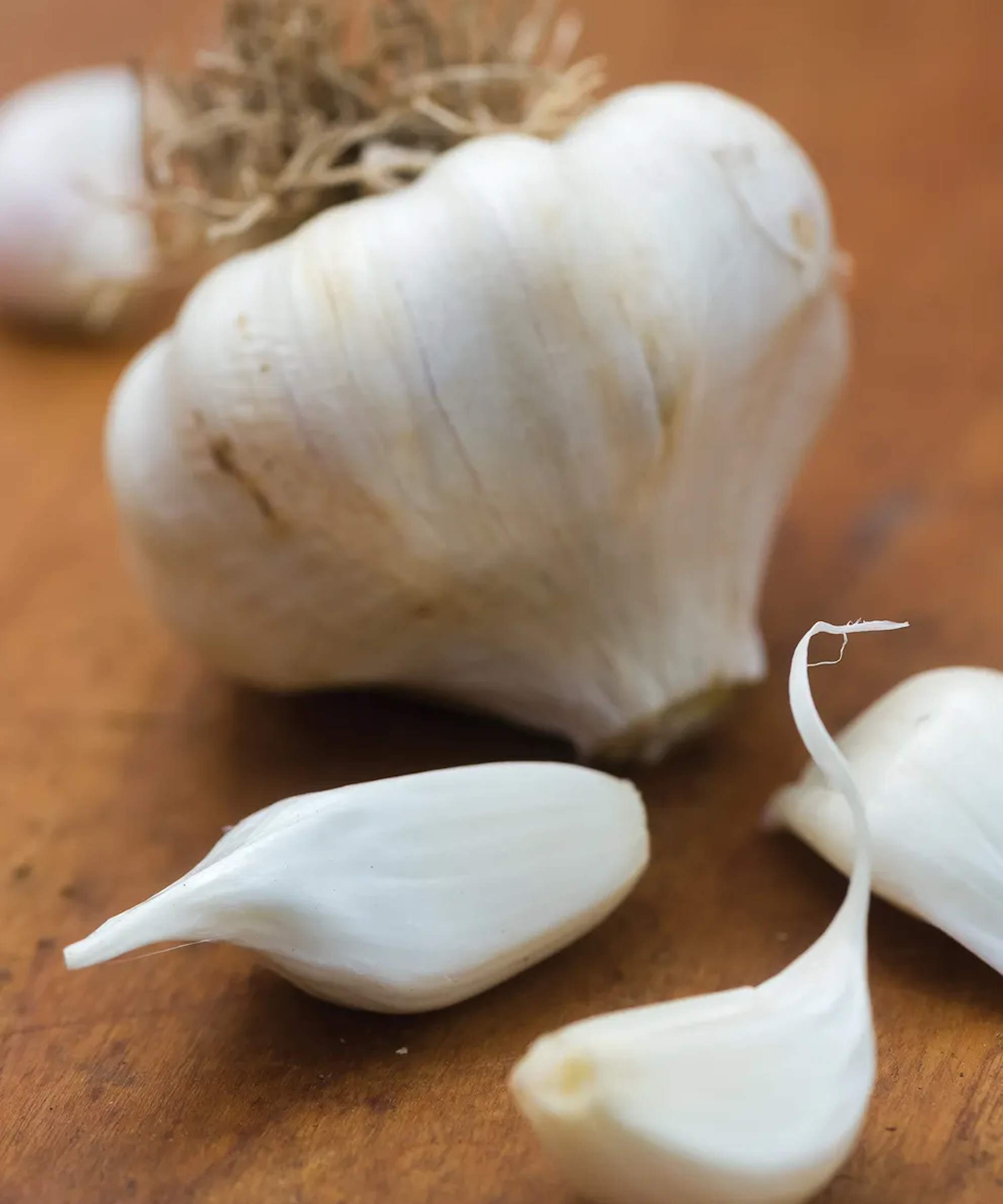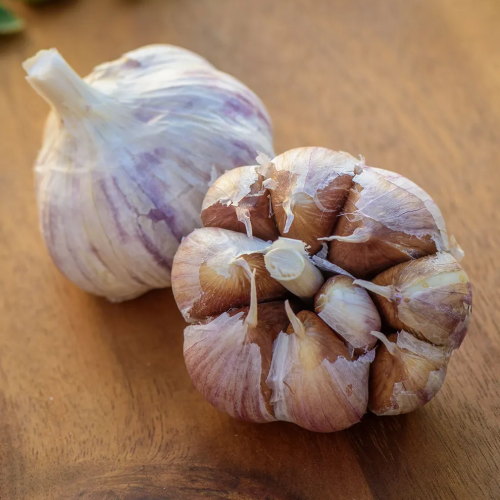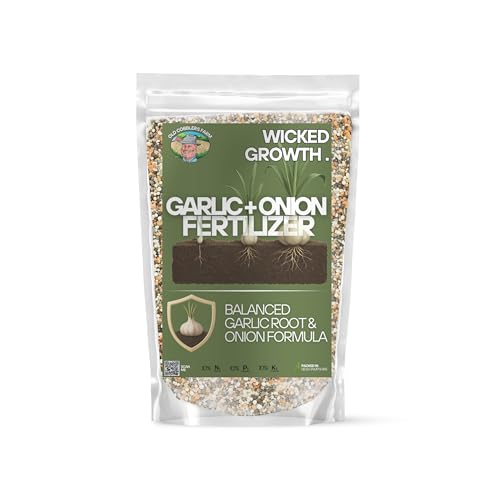How to grow the biggest garlic ever – 6 expert steps for larger bulbs come harvest time
Never be disappointed by your garlic yields again
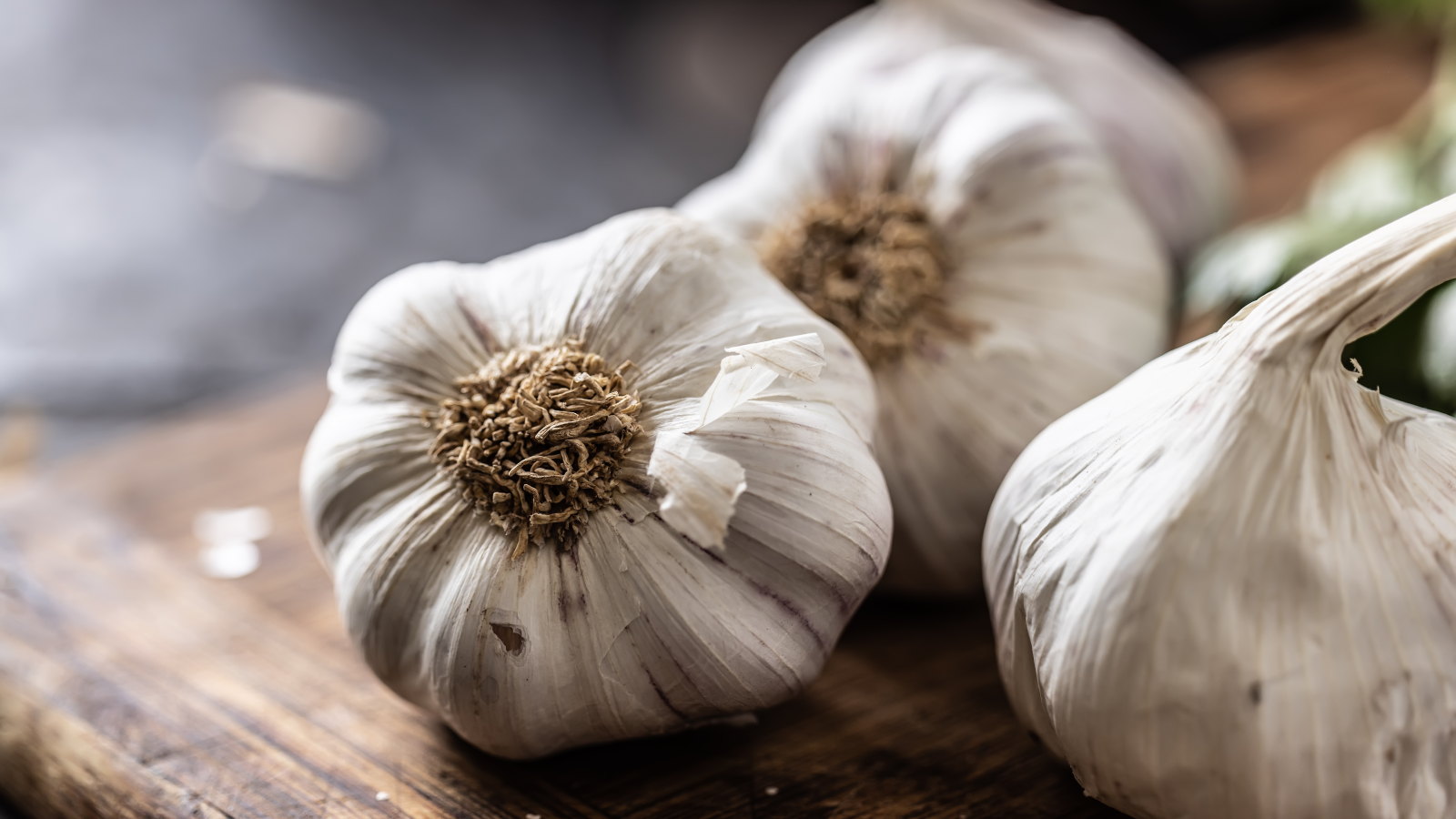
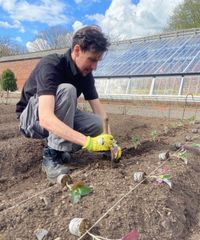
Garlic can be a simple crop to grow, but the sight of small, underwhelming bulbs can be disappointing come harvest time. If you want to grow bigger garlic next year, here are six key pointers to learn.
There are hundreds of varieties of garlic around the world; they come in different types, flavors, and sizes. I have grown garlic for many years, both as a professional gardener and on my home vegetable plots, and have been downhearted with small bulbs on multiple occasions.
The world record for the heaviest garlic bulb is held by Robert Kirkpatrick of Eureka, California, when his bulb weighed in at 1.19 kg in 1985. While we’re not guaranteeing you’ll reach record levels when you grow garlic, following these expert tips will help boost your bulbs.
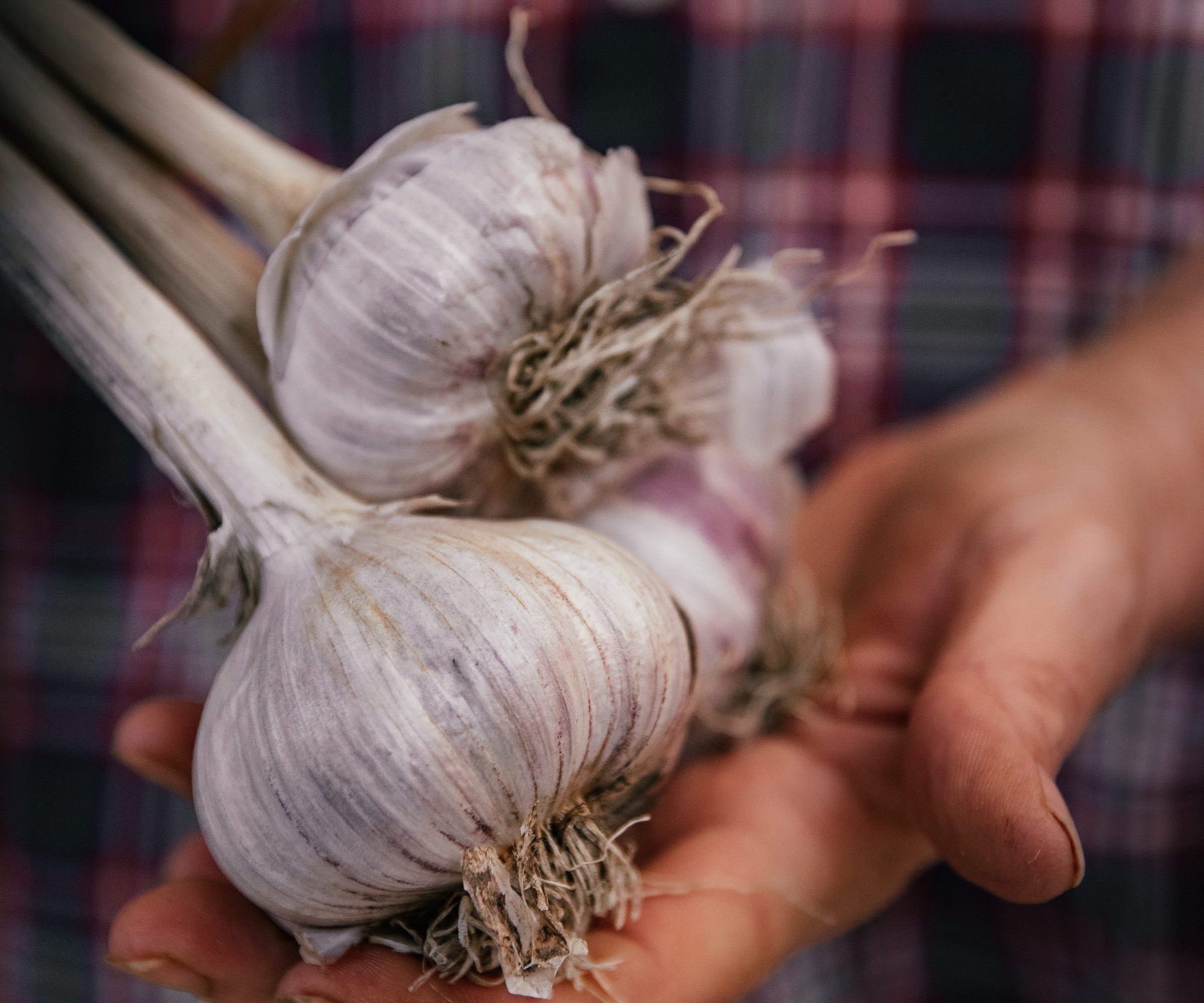
How to grow big garlic - 6 steps to success
These six factors will make a difference, helping you to grow bigger garlic and avoid any disappointment. So, boost your chances of large bulbs when you harvest garlic by following the steps.
1. Pick a large variety
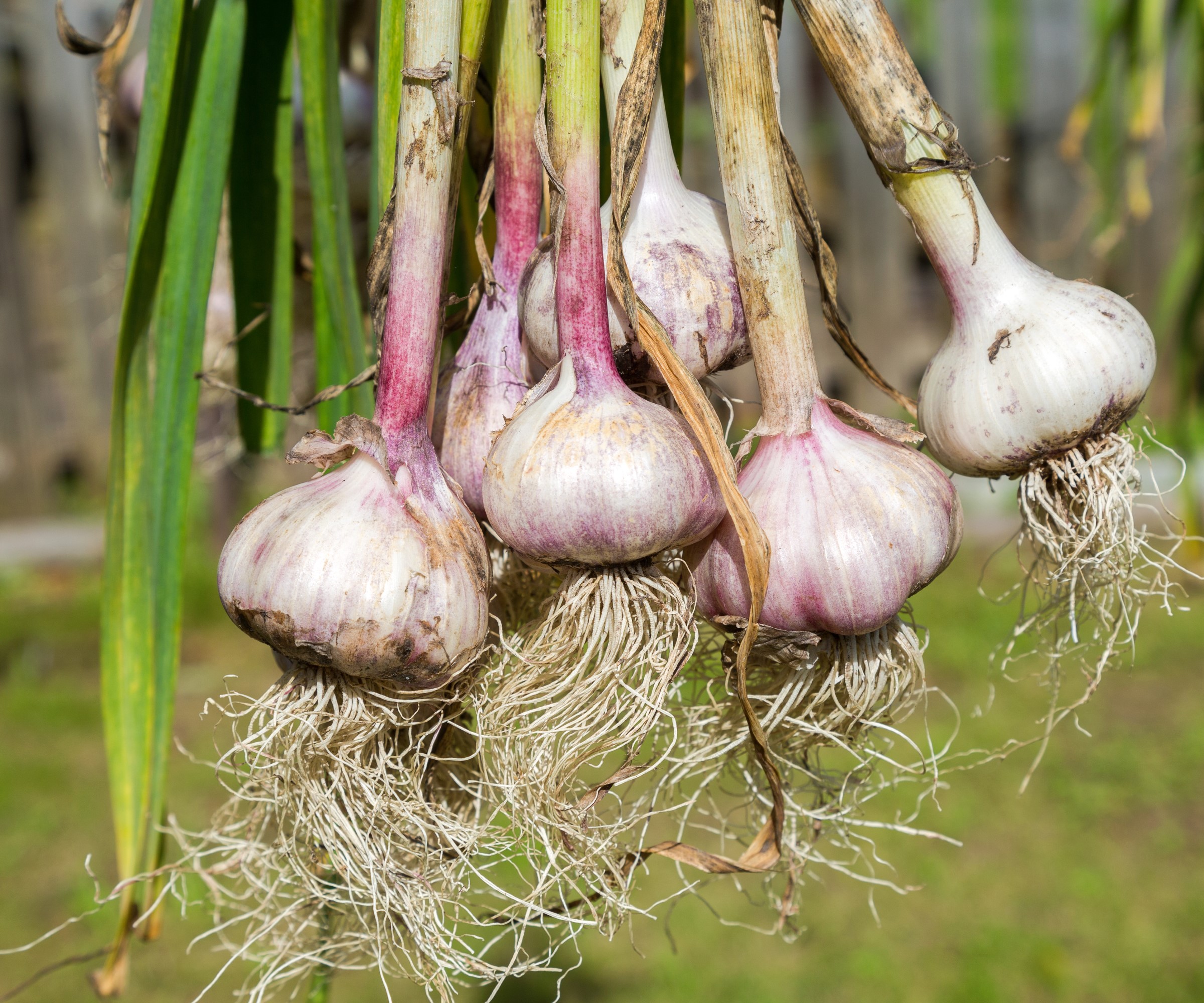
If you want to grow bigger garlic than your previous harvests, a tactical choice is to be selective about which types of garlic you grow.
Lindsay Chastain, experienced homesteader and founder at The Waddle and Cluck, claims ‘variety plays a huge role in how big your garlic will get’ and she highlights her particular favorites for big garlic bulbs.
‘The best types for bigger bulbs are hardneck varieties,’ says Lindsay. ‘Music is my favorite variety of hardneck, not just because I love the name, but also because they grow pretty big, are easy to peel, and can be stored for a long time. They also have an amazing flavor.’
Design expertise in your inbox – from inspiring decorating ideas and beautiful celebrity homes to practical gardening advice and shopping round-ups.
‘Georgian Fire is another variety with a great name known for its jumbo bulbs and really strong flavor.’
Growing hardneck or softneck garlic is an annual choice for gardeners. However, if you do want to grow softneck garlic, some types yield bigger bulbs than others. For example, Early Italian produces larger cloves than many softneck varieties, and Kettle River Giant is a rare heirloom variety renowned for producing consistently large garlic bulbs.
For a truly monster-sized bulb, you could consider growing elephant garlic. The bulbs, which can reach the size of a baseball, have a milder flavor than regular garlic.

Lindsey Chastain, a dedicated homesteader and skilled writer, is the driving force behind The Waddle and Cluck, a platform that celebrates sustainable living, gardening, and responsible farming
2. Plant the biggest cloves
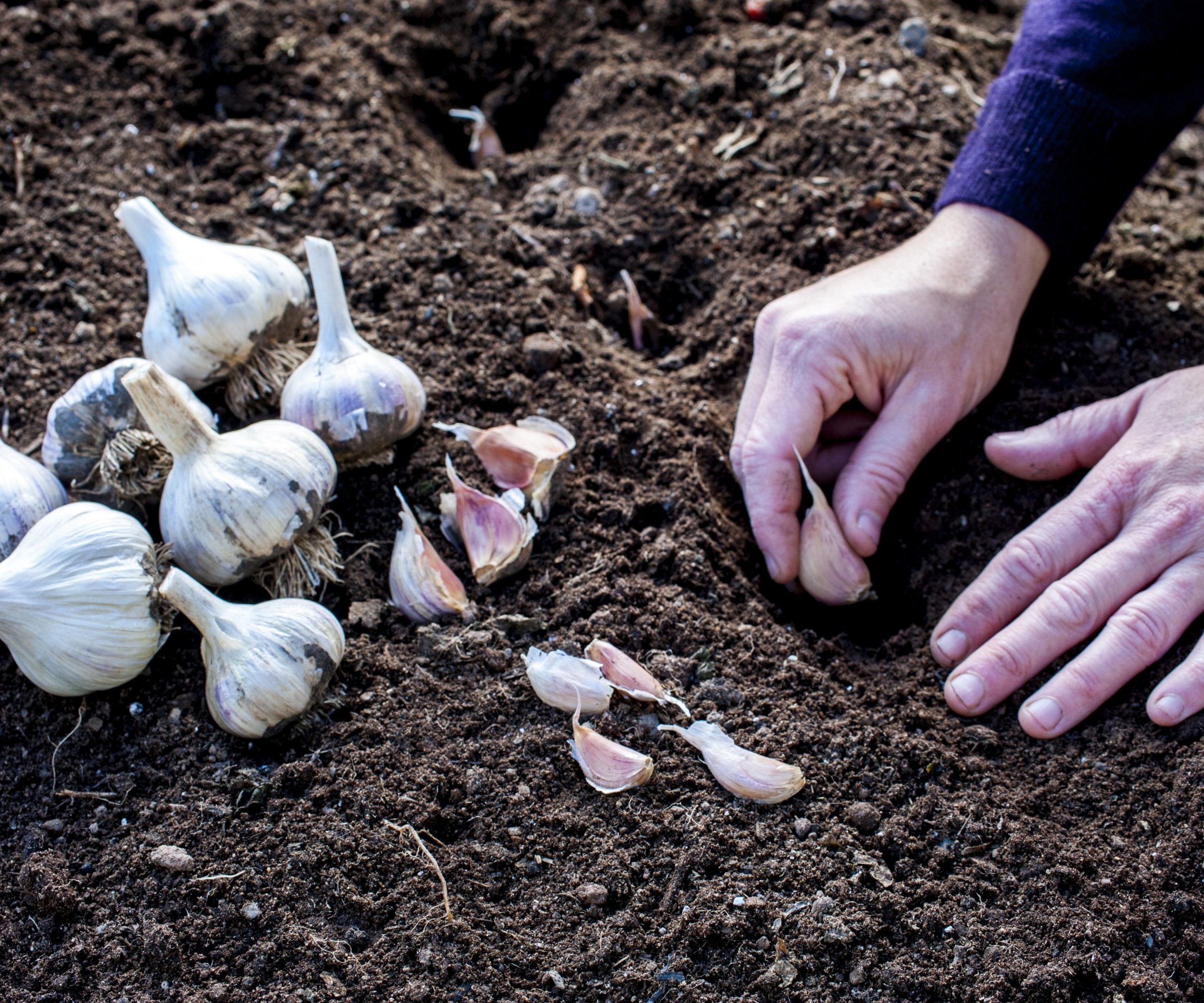
A simple mantra to remember if you want to grow bigger garlic is that bigger cloves mean bigger bulbs. When you plant garlic in the fall, choose the largest cloves as these will develop into the biggest bulbs come harvest time.
It is also important to use healthy seed garlic, rather than attempting to grow garlic from grocery store garlic. These store-bought bulbs can be treated with chemicals to prevent sprouting and may even be contaminated with diseases, including garlic rot.
So, always buy healthy, quality, seed garlic, and when you separate the cloves, give priority to the largest ones. When you harvest your own cloves, use the smaller ones for cooking and retain the largest ones to replant for bigger garlic next year.
3. Boost the soil before planting
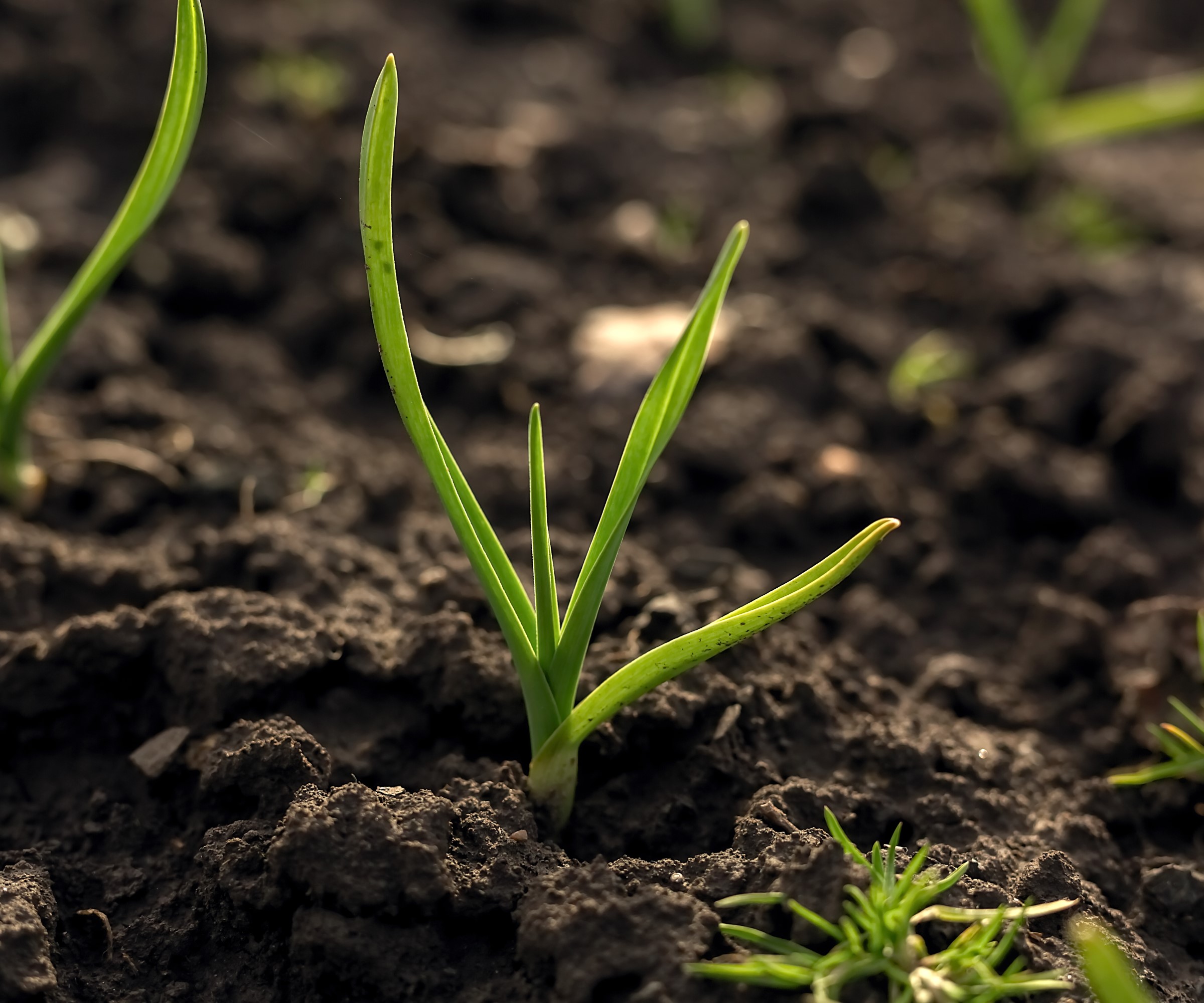
Garlic will grow strongly in fertile soil that meets its nutrient needs. It is a hungry crop that requires lots of nutrients to grow through the season and produce large bulbs.
It is beneficial to get your soil type tested to check for the nutrient levels. Mark V Wessel, Director of Horticulture Research at Gardens Alive!, claims: ‘Soil tests are always a good idea before or during the growing season to determine what is needed.
This is especially true for phosphorus and potassium, which are both important nutrients for developing bigger garlic bulbs.’
Nitrogen is also a key nutrient. You can add nitrogen to your soil by mixing in organic matter, such as compost or well-rotted manure, before planting garlic in the fall, or adding blood meal (you can get blood meal at Burpee) when, or just after, planting.
The likes of bone meal (such as this organic bone meal at Walmart) or rock phosphate are two ways to add phosphorus to soil if your tests identify any deficiencies.

Mark V Wessel is the Director of Horticulture Research and Research Farm Manager at Gardens Alive! - the company that specializes in selling organic garden and lawn supplies
4. Give the plants space
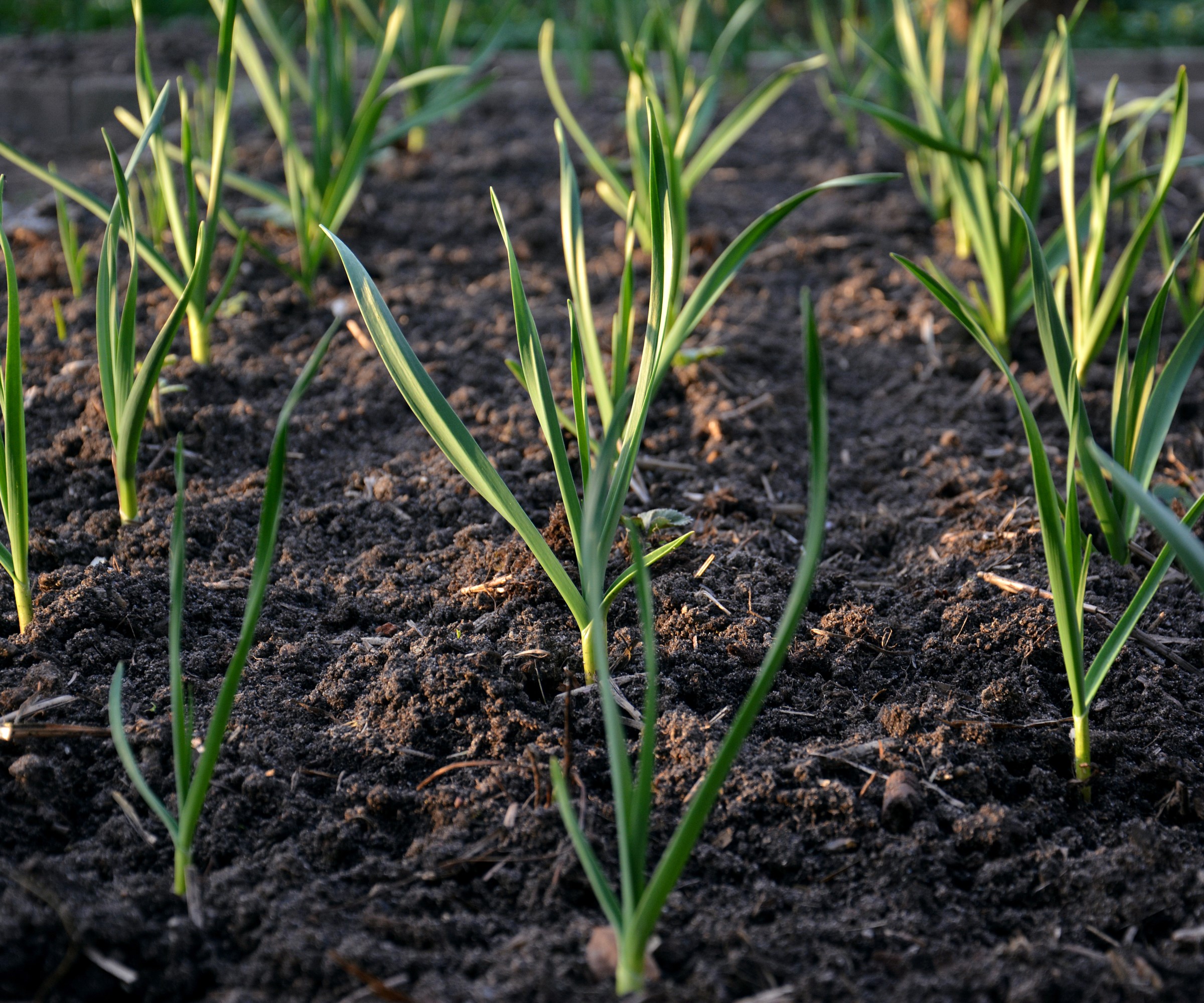
When planting garlic, give the bulbs adequate space for them to develop into bigger garlic.
Don’t be tempted to squeeze lots of cloves into a small space. Instead, space each one 6-8 inches apart in rows 8-10 inches apart. This gives each bulb lots of room to develop, and still maintains air circulation between plants to keep them healthy.
After planting in the fall, garlic will benefit from mulching. A layer of compost, straw, or wood chips will insulate the roots when the temperatures drop, keep moisture in the soil, and also smother weeds from popping up.
Keeping on top of weeds will help your garlic grow stronger and bigger. Any weeds will steal sun, water, and nutrients from the garlic, impacting the eventual size of the bulb.
Mulching and weeding regularly throughout the season helps keep weeds at bay and benefits your garlic. I prefer to use a garden hoe often around the plants, being careful not to damage the garlic or disturb the crop’s shallow roots.
5. Feed your garlic in spring
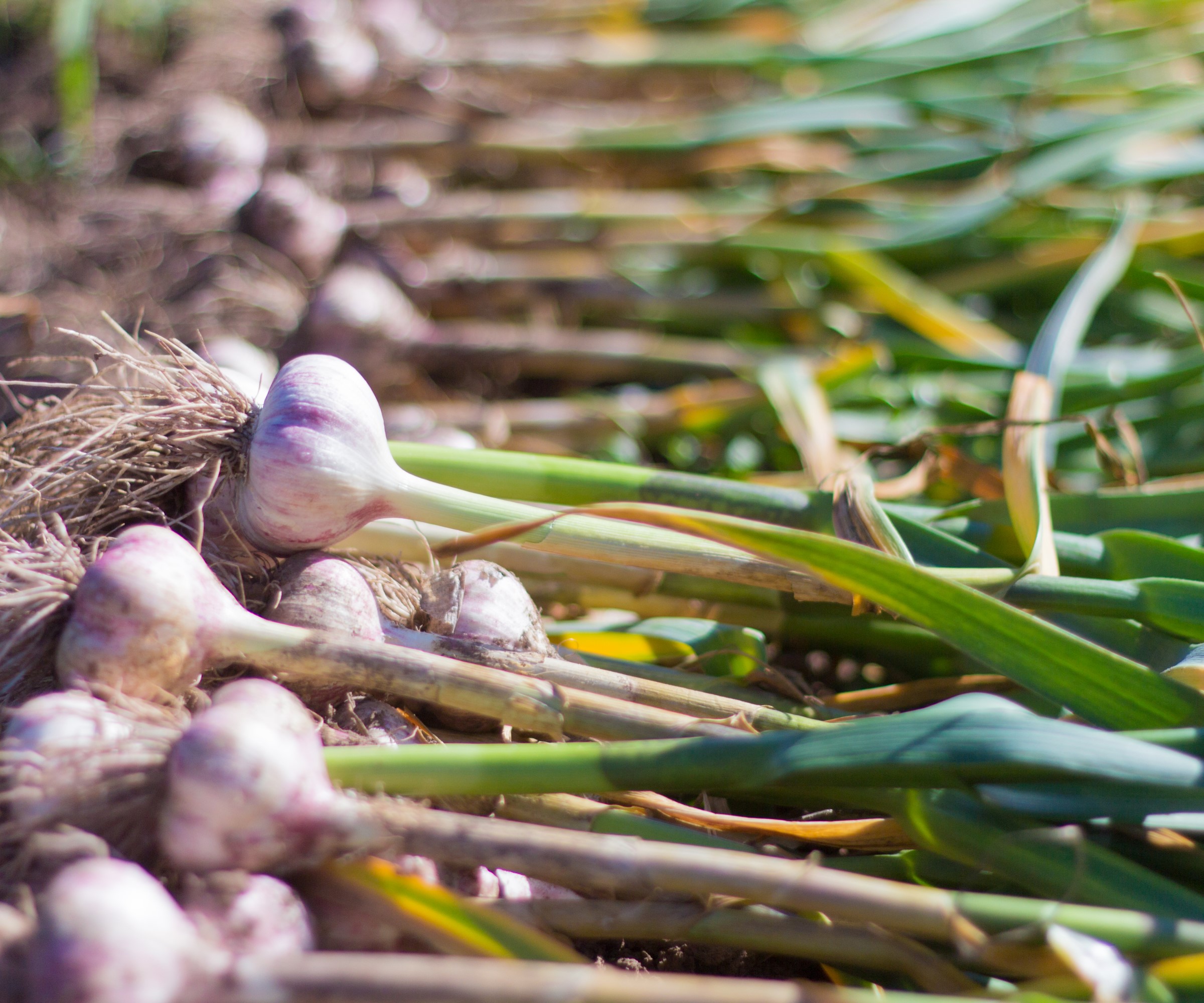
As earlier touched upon, garlic is a heavy feeder that, along with preparing the soil ahead of planting, requires additional feeding for strong growth and the formation of a large bulb.
After planting in the fall, the crop will welcome being fed again come spring. ‘Fertilize in the spring when plants are actively growing and then 45-60 days later,’ says Mark V Wessel. ‘Spring applications can either be broadcast over the bed style plantings or side-dressed for row plantings.’
A well-balanced feed makes an excellent choice to fertilize garlic in the spring, such as a product with an NPK – where the nutrient make-up is shown as a ratio of plant fertilizer numbers on any packaging - of 5-5-5 or 10-10-10.
Only ever apply the product at the recommended rates; going over this is a fertilizing mistake that can harm the crop.
6. Remove the scapes
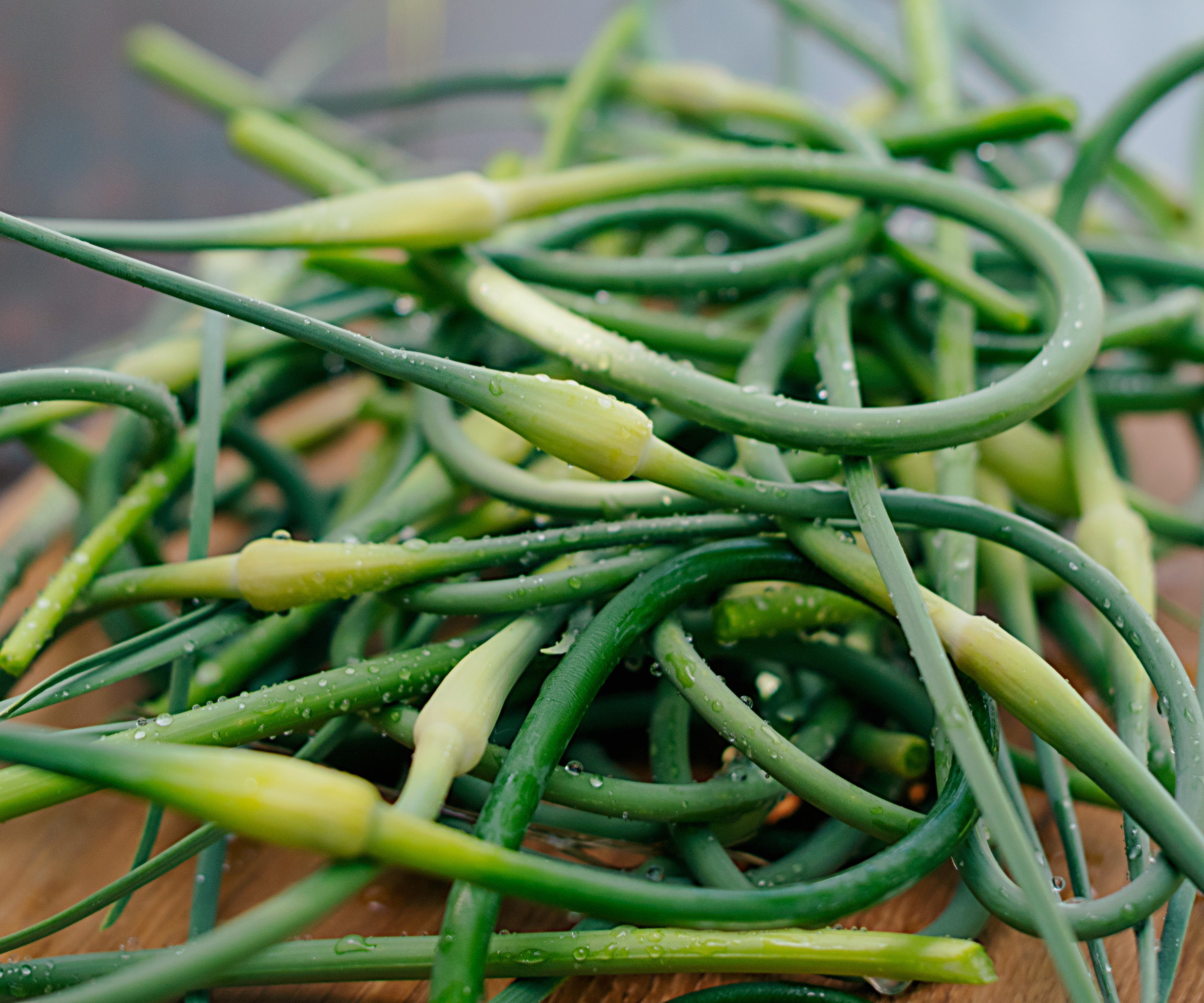
Hardneck varieties produce garlic scapes in spring. These tender, edible stalks are a delicacy and are produced before the bulbs mature, usually between mid-May and mid-June.
Harvesting garlic scapes not only gives you a delicious harvest, but it focuses the energy into developing the bulb rather than these stalks. It means less energy diverted away from swelling the garlic bulbs, and more going into growing larger bulbs.
Garlic scapes are not all ready at the same time, but need to be regularly picked over a few weeks in spring. Either cut the stalk or snap the stem once they start to spiral.
FAQs
How much garlic do you get from one bulb?
One garlic bulb can contain anywhere between six and 20 cloves, depending on the variety. However, a typical bulb tends to have 8-12 garlic cloves.
If you are short on growing space, you can grow garlic in pots or raised beds. There is potential to grow big garlic in containers if you follow the pointers above. It is important to use a large container, especially if you want to give several bulbs space to develop.
Garlic in containers also needs extra feeding, at least once a month from spring until early summer, with a balanced feed high in phosphorus and potassium.
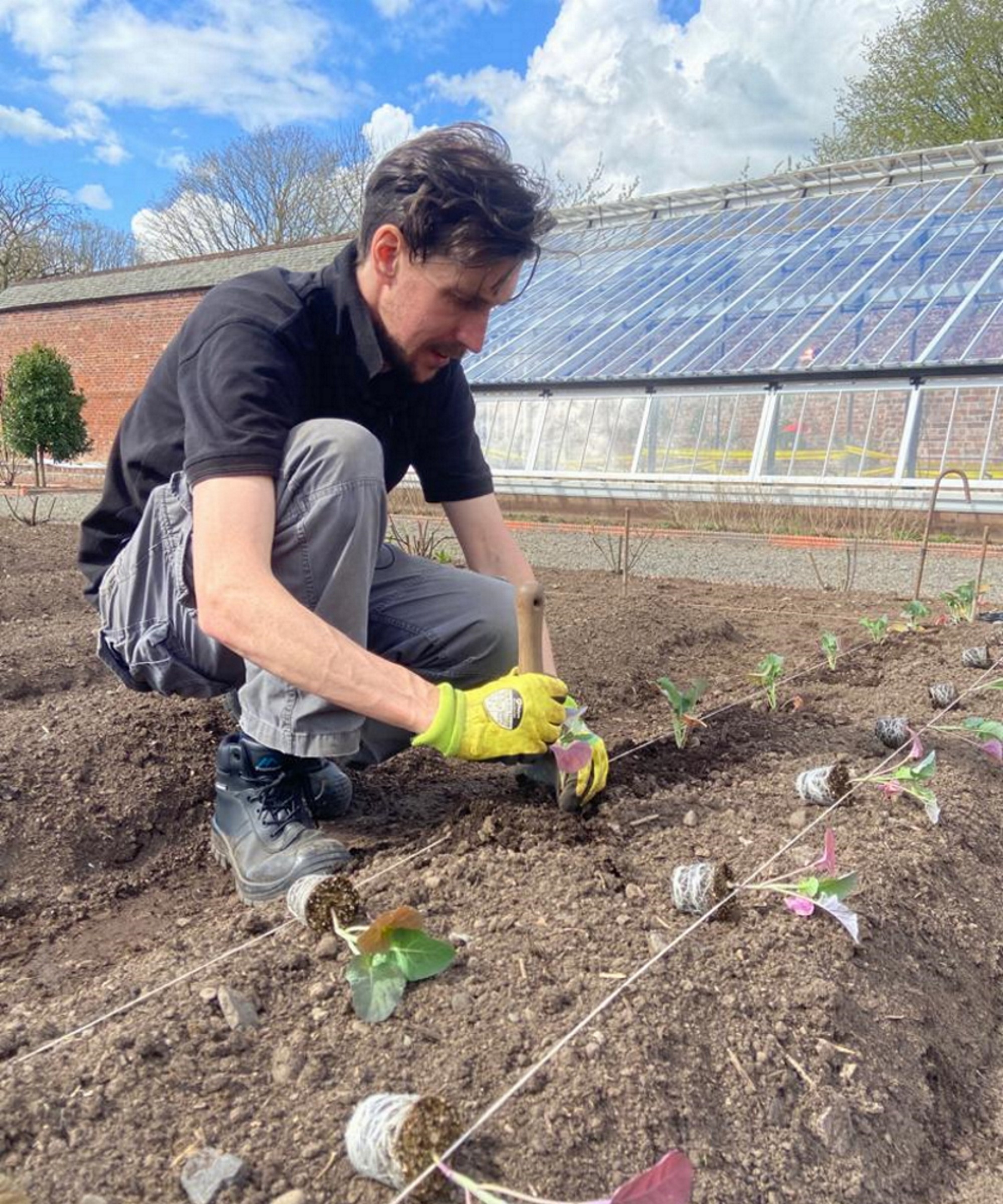
Drew has worked as a writer since 2008 and was also a professional gardener for many years. As a trained horticulturist, he worked in prestigious historic gardens, including Hanbury Hall and the world-famous Hidcote Manor Garden. He also spent time as a specialist kitchen gardener at Soho Farmhouse and Netherby Hall, where he grew vegetables, fruit, herbs, and cut flowers for restaurants. Drew has written for numerous print and online publications and is an allotment holder and garden blogger. He is shortlisted for the Digital Gardening Writer of the Year at the 2025 Garden Media Guild Awards.
You must confirm your public display name before commenting
Please logout and then login again, you will then be prompted to enter your display name.
